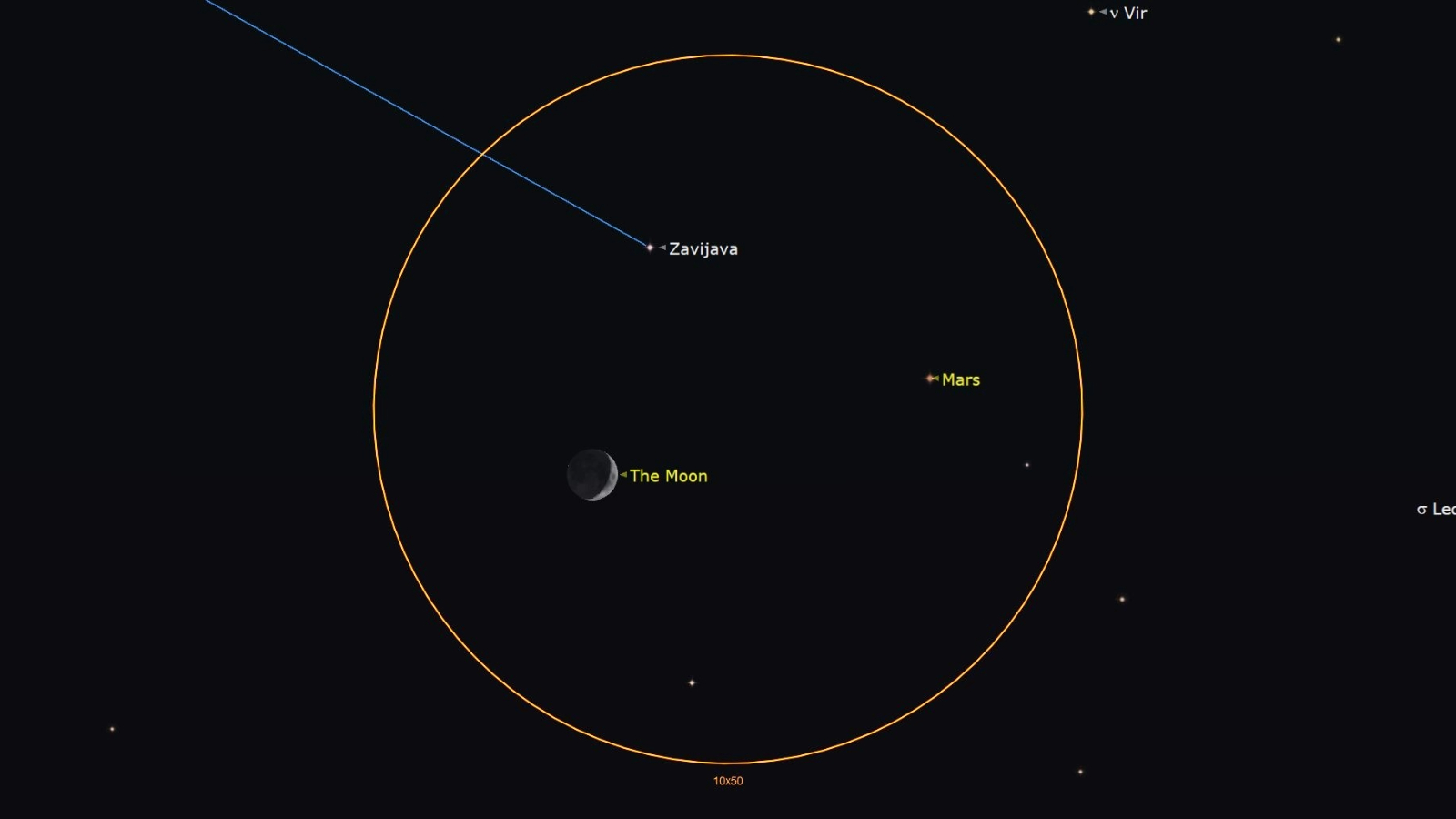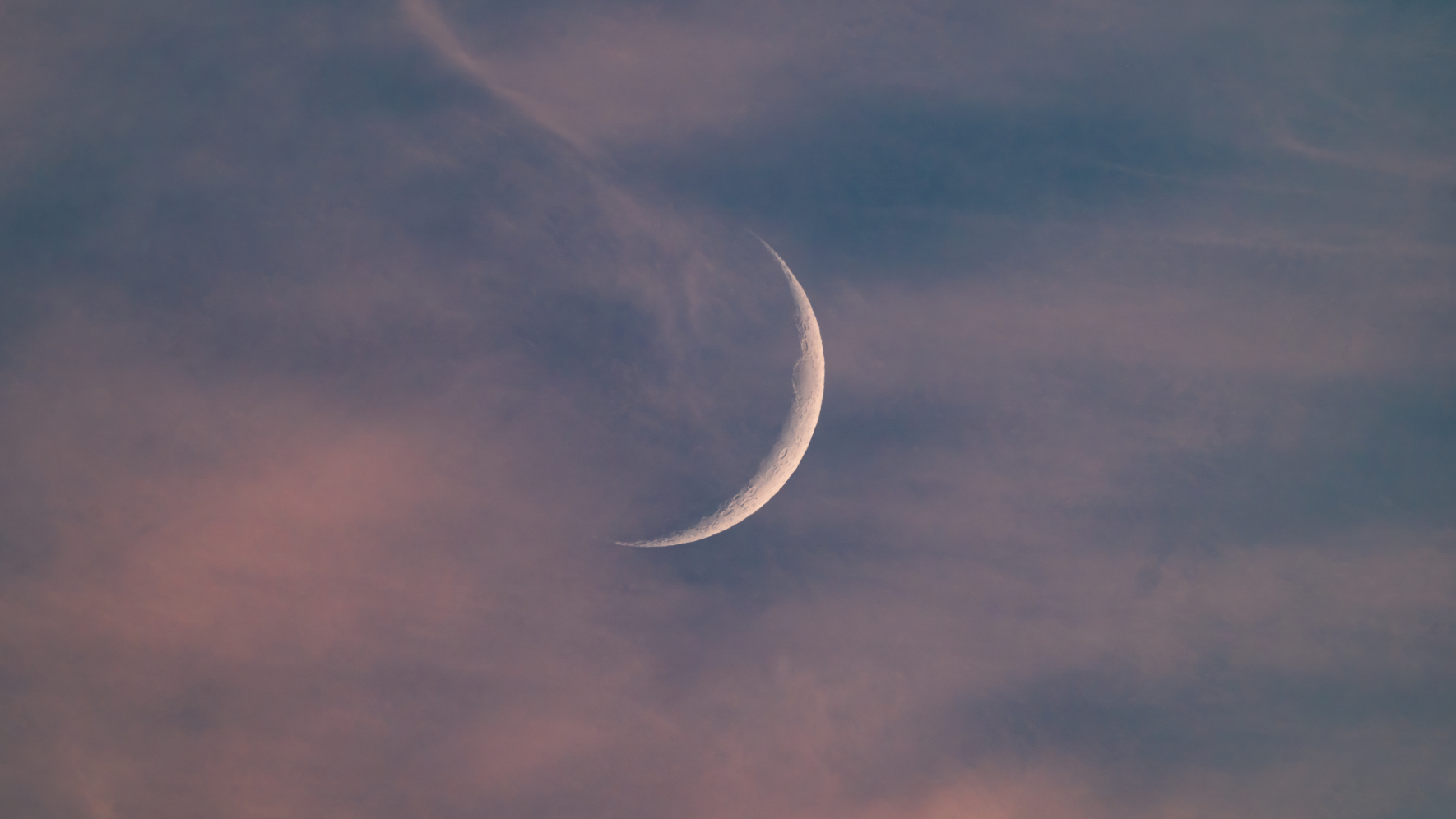Heads up, stargazers! The waxing crescent moon will appear on the left shoulder of Mars in the hours following sunset on July 28 — close enough for both to fit easily in the view of a pair of 10x50 binoculars.
The crescent moon will be visible 20 degrees above the western horizon at sunset on July 28, with Mars appearing as a bright point of light roughly four degrees to its upper right. Both Mars and the stars of the nearby constellation Virgo will grow more prominent as the glow of the setting sun gives way to the coming night.
Around this time, the moon and Mars will be close enough together to fit inside the field of view of a pair of 10x50 binoculars, which will help reveal the dark oval of Mare Crisium (the Sea of Crisis) marking the northeastern region of the lunar surface. The 460-mile-wide (740 kilometers) basaltic plain was formed by lava flows flooding the impact basin excavated when a 25-mile-wide (40 km) asteroid collided with the moon around 4 billion years ago. (Mare Crisium was also the landing site of Firefly Aerospace's robotic Blue Ghost spacecraft, which touched down there in March.)
Mars, meanwhile, will appear as a bright red star to the naked eye and through binoculars, while a telescope with an aperture of 4 inches (10 centimeters) or more will allow you to begin resolving surface features on the Red Planet. A Schmidt-Cassegrain with an aperture of around 8 inches (20 cm) will provide an even clearer view of the Martian polar ice caps and dark enigmatic regions marking Earth's neighboring world, according to telescope maker Celestron.
As always, the greatest of care must be taken when observing objects close to the rising or setting sun. You can make sure that our parent star is safely below the horizon by checking the sunset time for your locale using a website like TimeandDate.com, or in-the-sky.org.

Both Mars and the waxing crescent moon will set roughly two hours after the sun on July 28, so be sure to stake out a good viewing spot with a clear view of the western horizon to maximize your viewing time.
Stargazers hoping to upgrade their equipment should check out our guide to the best telescopes and binoculars for exploring both the worlds of our solar system and the wider universe beyond. Those looking to gain a deeper understanding of the twilight realm should also read up on the best astronomy smartphone apps available in 2025.
Editor's Note: If you would like to share your astrophotography with Space.com's readers, then please send your photo(s), comments, and your name and location to [email protected].

.jpg) 4 hours ago
1
4 hours ago
1

 English (US)
English (US)